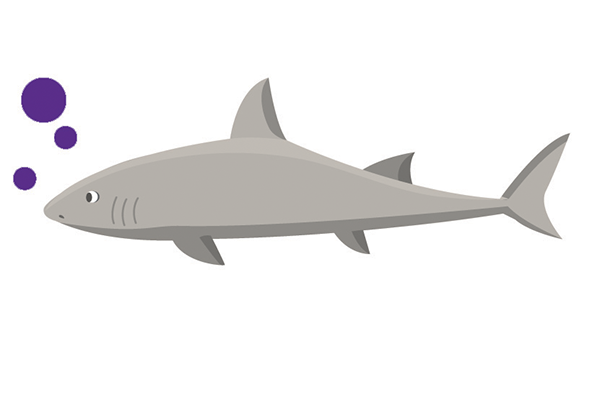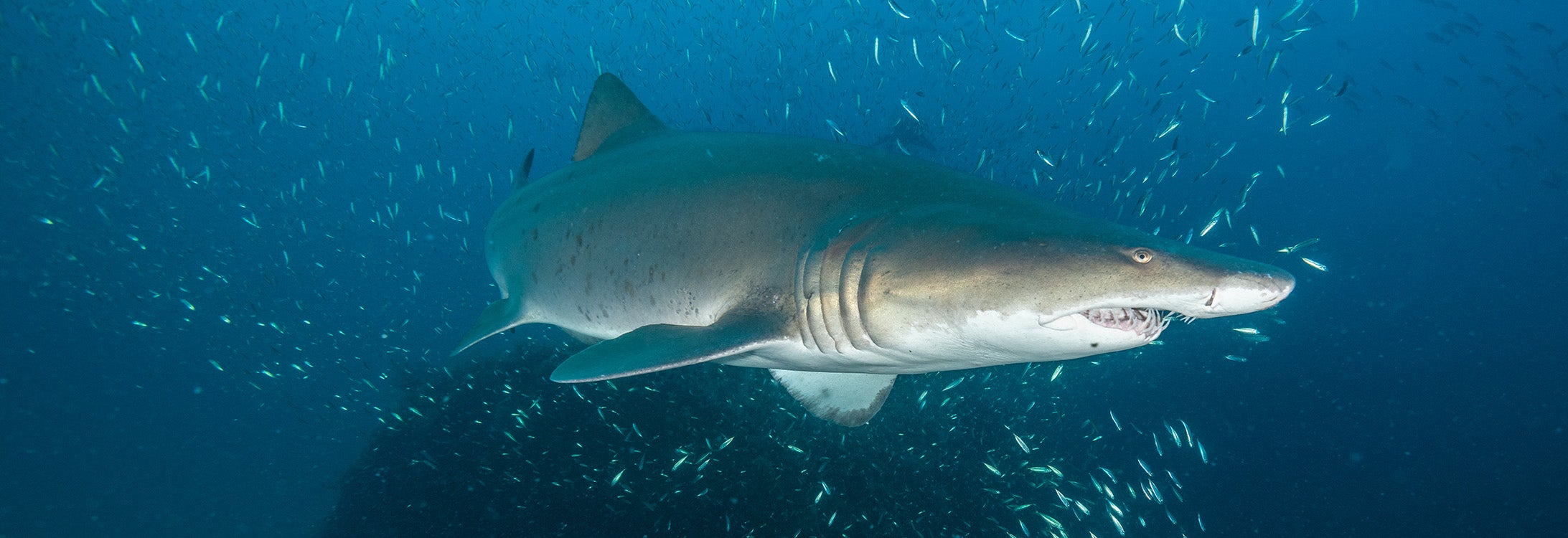SHARING THE SEAS
Dr. Charles Bangley, postdoctoral fellow at the Smithsonian Environmental Research Center and an ECU alumnus, emphasized that shark attacks are very rare, and credits the extra attention they have received in North Carolina this summer to the severity of Winter’s case and the short time frame during which multiple attacks occurred.
“North Carolina averages about one to two shark bites per year, so this summer we’re really only one incident above average,” Bangley said. “Most shark bites in North Carolina waters are the work of relatively small blacktip or spinner sharks, which feed on small fish in the surf and sometimes accidentally grab a hand or foot in the process.”
 Injuries from such incidents typically require stitches but aren’t life threatening, Bangley said. Encounters with larger species such as bull and tiger sharks sometimes occur near shore during the summer, but even from those larger, more aggressive species, a bite on a human is extremely rare, he said.
Injuries from such incidents typically require stitches but aren’t life threatening, Bangley said. Encounters with larger species such as bull and tiger sharks sometimes occur near shore during the summer, but even from those larger, more aggressive species, a bite on a human is extremely rare, he said.
Bangley’s advice for enjoying time in the water includes being observant of the water conditions.
“Some things to avoid in particular are fishing activity, and definitely stay at least a few hundred yards away from any fishing piers,” he said. “Between all the bait, cleaned fish, and struggling fish on the line, fishing piers are shark magnets and some actually have large groups of sharks that visit them regularly.”
Signs of feeding activity in the water can also be observed from shore and are to be avoided. Large schools of baitfish look like spots or blobs of darker water, and lots of fish jumping and birds diving are an indication of something larger attacking the school from below.
“Swimming in clear water is always preferable because it allows a passing shark to get a good look at you and figure out you’re not something that’s normally on the menu,” Bangley said. “And generally swim in groups and near lifeguards.”
Bangley’s research at ECU included shark surveys in Back and Core sounds, as well as working with the N.C. Division of Marine Fisheries and commercial fishermen to gather data on shark catches and tracking sharks in the state’s coastal waters.
His work identified a trend of increased numbers of juvenile bull sharks in the Pamlico Sound, which was strongly associated with increasing water temperatures.
“This was unnerving not because of the sharks themselves (we found over a dozen species in Back, Core, and Pamlico sounds), but because it’s a symptom of a larger ecological shift going on in North Carolina waters in which southern warm water species are moving in and species adapted to cooler water are moving out,” he said. “This is most likely a consequence of climate change and could create serious issues for coastal economies that depend on fisheries and tourism.”
For more information on Bangley’s work, visit:

